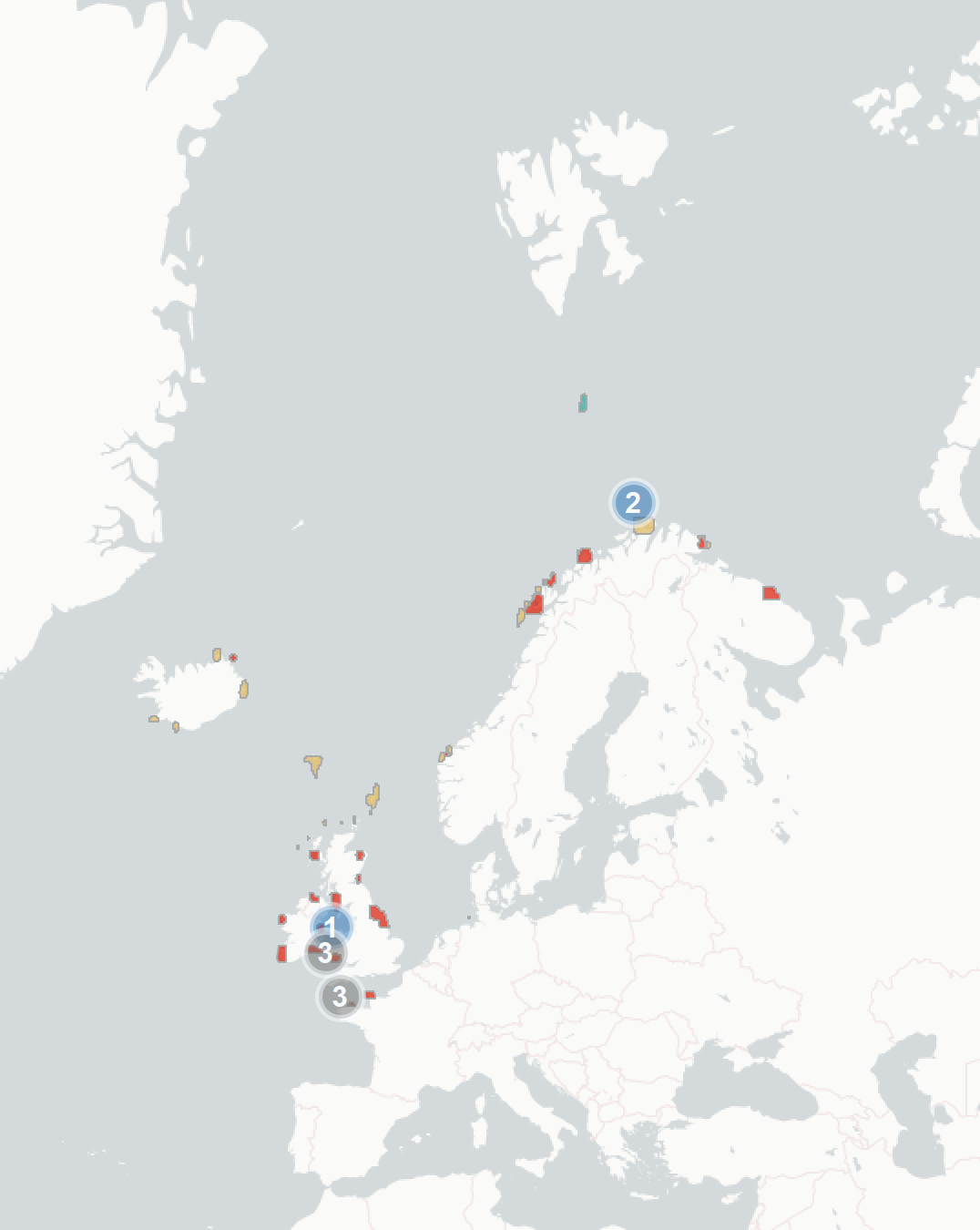Northern Gannet (Morus bassanus): vulnerability to climate change
Evidence for exposure
Potential changes in breeding habitat suitability:
-
Current breeding area that is likely to become less suitable (62% of current range)
-
Current breeding area that is likely to remain suitable (37%)
-
Current breeding area that is likely to become more suitable (1%)
Current impacts to Northern Gannets attributed to climate change:
-
Neutral Impact: Gannets are undertaking longer foraging trips, most likely in response to prey shortages due to climate change. Although this likely increases the energetic costs of foraging, there have so far been no observed impacts on breeding success or mortality.
-
Positive Impact: Gannets have established new colonies as key prey species have shifted further north.
Predicted changes in key prey species:
-
Key prey species are likely to decline in abundance in the southern Irish Sea and on the north coast of France
Climate change impacts outside of Europe
-
Marine heatwaves in North America have resulted in wide-spread breeding failure and in some cases temporary desertion of colonies. Most likely because of prey shortages, but heat stress could play a role as well. It is difficult to attribute individual climate events to climate change, but heatwaves are becoming more common and more extreme, and will likely continue to do so.
-
Lack of key prey species (mackerel) due to warmer average marine temperatures and over-exploitation has caused low breeding success in a southern population of gannets in Canada.
Sensitivity
-
Heatwaves are known to cause heat stress in gannets chicks and adults. So far this has not been observed to significantly affect populations in Europe, but heatwaves in other parts of their range have caused breeding failures and temporary colony desertion.
-
This species has a long generation length (>10 years), which may slow recovery from severe impacts and increases population extinction risk
Adaptive capacity
-
Gannets occasionally establish new colonies, there are multiple records of them colonising or recolonising areas following environmental change or removal of threats.
-
Individuals are often very loyal to breeding sites. Once adults establish a nest site they will return for many years, which reduces their capacity to adapt to change at breeding sites.
-
Diet is variable across their range and over time. Long term studies have noticed shifts in primary prey species over several decades, which indicates some capacity for populations to shift diet
-
Gannets have been noted to change phenology, but not in correlation to changes in conditions. Overall there is little change in migration timing, and the underlying causes for any observed changes is uncertain.
-
Gannets forage over large areas and show considerable flexibility in foraging behavior, local changes in prey availability are unlikely to have a large impact.
